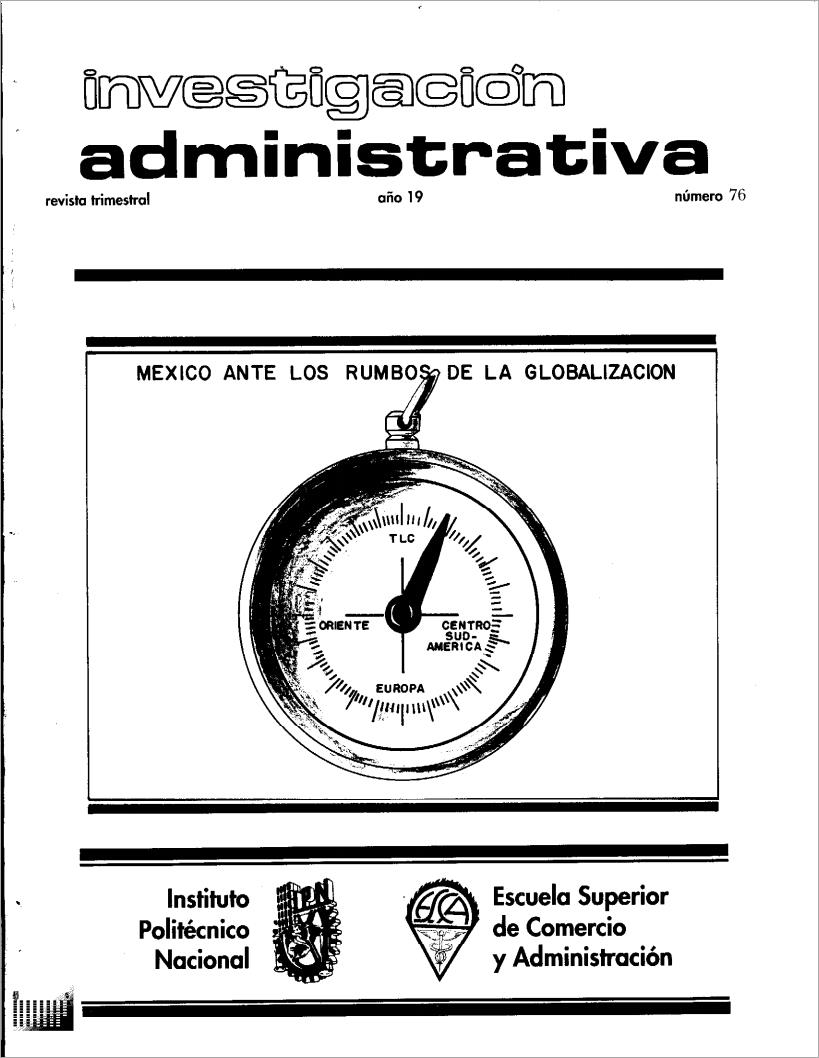Productivity in science: evidence of its variations in Mexico
Main Article Content
Abstract
As a social activity, science can be defined as an exchange of information for recognition. If the purpose of science is to produce knowledge about nature (broadly understood), exercising the role of scientist implies the expectation that each researcher will contribute to the expansion of knowledge by providing information deemed valuable by their colleagues to the scientific community. That is, in institutionalized science, the researcher is subject to a double set of norms: social and technical.
The former require them to share the results of their activities; the latter require them to address a restricted range of problems whose approach and solution must be formulated in terms of cognitive and technical criteria shared by their scientific community.
The reward or consideration that the researcher receives in exchange for their contribution is the recognition of their colleagues, who are the only ones competent to judge the value of their contribution. There are a variety of types of recognition, ranging from the most formal, visible, and rare, such as international awards and induction into national academies, to the simple congratulations of a colleague for work that has been made known to them.
Article Details

This work is licensed under a Creative Commons Attribution-NonCommercial 4.0 International License.
References
Allison, Paul D. y John A. Stewart. 1974. “Productivity Differences Among Scientists: Evidence from Accumulative Advantage. American Sociological Review 39: 596-606.
Alliso, Paul D.,J. Scott Longy Td. K. Krauze. 1982.“Cumulative Advantage and Inequality in Science”. American Sociological Review 47: 615-625.
Allison, Paul D. y J. Scoll Long. 1990. “Dcpartamentals effects on Scientific Productivity”. American Sociological Review 55:469-478.
Bayer, Alan E. yjohn Folger. 1966. “Some Correlates of aCitation Measure of Productivity in Science”. Sociology of Education 39:381-90.
Bayer, Alan E. 1973. “Teaching Faculty in Academe: 1972-73. ACE Research Reports 8:1- 68.
Campos, Miguel A. 1991. “Un Perfil de la CienciaylaTecnologia”. pp. 15-32 en Elsistema de la ñenday la tecnología en México, editado por Miguel A. Campos y Jaime Jiménez. México: IMÁS.
Cartter, Allan M. 1966. An Assesment of Quality in Graduate Education. Washington: American Council on Education.
Coie, Jonathan y Stephen Cole. 1973. Social Stratification in Science. Chicago: University of Chicago Press.
Consejo Nacional de Ciencia y Tecnología. 1991. Indicadores a las actividades científicas y tecnológicas en México. México: SEP/CONACYT.
Crane, Diana. 1965. “Scientists at Major and Minor Universities: aStudy in Productivity and Recognition”. American Sociological Review. 30: 699-714.
Edwards, Frank M. (Ed.) 1979 Scientific Productivity: the Effectiveness of Research Groups in Six Countries. Cambridge: Cambridge University Press.
Flores, Jorge. 1976. “La Física en México”, pp. 111-115 en La ciencia en México, editado por Luis Cañedo y Luis Estrada. México: Fondo de Cultura Económica.
Flores, Jorge y Margarita Pimienta. 1991. “La Investigación Científica”, pp. 33-53 en Elsiste ma de la ciencia y la tecnología en México, edit ado por Miguel A. Campos yjaime Jiménez. Méxi co: IMAS.
Fulton, Oliver y Martín Trow. 1974. “Research Activity in American Higher Education”. Sociology of Education 47: 29-73.
García-Colín, Leopoldo. 1988. “1.a importan cia de las bases de datos en en la ingeniería básica”. PP- 28-52 en Investigación e información científica en México, editado por Ruy Pérez Tamayo. México: Siglo XXI.
Gastón, Jen y. 1978. The Reward System in British and American Science. NuevaYork: Basic Books.
Hags trom, Warren. 1965. The Scientific Community. NuevaYork: Wiley. 1968. “Departamental Prestige and Scientific Productivity”. Trabajo presentado en la re unión anual de la Asociación Sociológica Norteamericana. 1971. “Tnouts, Outputs, and the Prestige of University Science Departments. Sociology of Education 44:375-97.
Hargcns, Lowelly Warren O. Hagstrom. 1967. “Sponsored and Contest Mobility inAmerican Academic Scientists. Sociology of Education 40:24- 38.
Jiménez, Jaime y Miguel A. Campos. 1986. Center'Periphery Analysis of Research and Development Resource Allocation. Comunicacio nes técnicas: Serie Naranja, investigaciones, No. 456. México: IMAS. . 1988. Center- Periphery Effect Within a
Country: the Case of México'1. Comunicaciones técnicas; Serie na ranja, investigaciones, No. 536.
Long, J. Scott. 1978. “Productivity and Academis Position in the Scientific Career”. American Sociological Review. 43:889-908.
Long, J. Scott, Paul De Allison y Robert McGinnis. 1979. “Entrance into the Academis Career. "American Sociological"
Review. 44:816-30.
Long, J. Scott y Robert McGinnis. 1981. “Organizational Context and Scientific productivity”. American Sociological Review. 46:422-442.
Lomnitz, Larissa A., Martha W. Rees y León Cameo, 1987. “Publication and Referencing Patterns in a Mexican Research Institute”. Social Studies of Science, 17:115-33.
Malo, Salvador y Beatriz Gonzales. 1989. “El SNI: Evaluación de 1988 y Situación Global Actual". Cienday desarrollo, 84:101-17.
Mateos, José Luis. 1976. “Consideraciones Sobre la Investigación en Química”. Pp. 101-10 en La ciencia en México, editado por Luis Cañedo y Luis Estrada. México: Fondo de Cultura Económica.
Merton, Robert K. 1971. “El Efecto Mateo en la Ciencia”, pp. 554-78 en Robert K. Merton, Sociología de la ciencia, editado por Norman Storer. Madrid: Alianza Editorial.
Merton, RobertK. y Harriet Zuckerman, 1968 “Pautas Institucionalizadas de Evaluación en la Ciencia”, pp. 579-621 en Robert K. Merton, Sociología de la ciencia, editado por Norman Storer. Madrid: Alianza Editorial.
Mulkay,M.J. 1971. “Conformity and Innovation in Science”, pp. 5-24 en Sociological Review Monograph No. 18. Londres: University of Keele.
Peña, Antonio. 1988. Realidad, Uso y Conoci miento de la Ciencia Biomédica en México, editado por Ruy Pérez Tamayo. México: Siglo XXI.

